 1966 Mercedes-Benz W109 SEL Dimensions, Size & Specs
1966 Mercedes-Benz W109 SEL Dimensions, Size & SpecsMeasurements of the 1966 Mercedes-Benz W109 SEL, engineered for optimal performance and comfort
| Dimensions | |
|---|---|
| Length: | 5000 mm196.9 in16.4 ft |
| Width: | 1810 mm71.3 in5.9 ft |
| Height: | 1420-1440 mm55.9-56.7 in4.7-4.7 ft |
| Weight Specifications | |
| Curb Weight: | 1630-1780 kg3594-3924 lbs |
| Maximal permitted Weight: | 2130-2280 kg4696-5027 lbs |
| Tire Specifications | |
| Rims Sizes: | 14-inch rims:
|
The Mercedes-Benz W109 SEL is a classic luxury sedan produced from 1965 to 1972, representing one of the premier full-size models of its era. Introduced for the 1966 model year, the W109 SEL showcases the traditional Mercedes-Benz craftsmanship and engineering excellence combined with a spacious and comfortable passenger cabin. The vehicle measures 5000 mm (196.9 inches) in length, providing ample interior space and a commanding road presence. Its width spans 1810 mm (71.3 inches), contributing to a stable stance on the road while maintaining maneuverability typical for a sedan of its class and period. The W109 SEL's height ranges between 1420 mm (55.9 inches) and 1440 mm (56.7 inches), reflecting minor variations likely due to suspension setup or specific model variants within the production years. Curb weight varies from 1630 kg (3593 lbs) to 1780 kg (3924 lbs), indicating differences based on equipment levels and optional features. The maximum weight ranges between 2130 kg (4695 lbs) and 2280 kg (5026 lbs), ensuring strong build quality and durability typical of Mercedes-Benz. The wheel sizes range from 6J x 14 to 6.5J x 14 inches, supporting the vehicle's impressive handling dynamics and ride comfort. Overall, the W109 SEL stands out as an elegant and substantial sedan embodying the pinnacle of Mercedes-Benz mid-20th century luxury, blending size, robustness, and engineering to appeal to discerning drivers. It remains a significant reference point for classic car enthusiasts and size comparisons within the luxury sedan segment of the 1960s and early 1970s.
Discover the standout features that make the 1966 Mercedes-Benz W109 SEL a leader in its class
Have a question? Please check our knowledgebase first.
The Mercedes-Benz W109 SEL Sedan, produced from 1965 to 1972, is notable for its substantial size and classic luxury styling. Its length measures exactly 5000 mm (196.9 inches), providing a long and commanding presence on the road. The width of the vehicle is 1810 mm (71.3 inches), allowing for spacious interior seating and a stable driving experience. Height ranges between 1420 mm and 1440 mm (55.9 to 56.7 inches), depending on suspension variations or optional equipment. These dimensions altogether contribute to a dignified and elegant sedan that comfortably accommodates passengers and offers a smooth ride typical of prestigious vehicles from that era.
The curb weight of the Mercedes-Benz W109 SEL varies from 1630 kg to 1780 kg (approximately 3593 lbs to 3924 lbs), which is relatively heavy due to its large size and luxurious equipment. This mass contributes to a solid, stable ride and absorbs road imperfections well, enhancing passenger comfort. The maximum permissible weight ranges from 2130 kg to 2280 kg (about 4698 lbs to 5026 lbs), accounting for passengers and cargo. The significant weight necessitates a robust engine and suspension setup, which Mercedes-Benz engineered carefully to ensure reliable performance, smooth handling, and safe braking. While the heavier weight might reduce agility compared to smaller cars, it elevates comfort and road stability, which was crucial for a luxury sedan of its time.
The Mercedes-Benz W109 SEL is 5000 mm (196.9 inches) long and 1810 mm (71.3 inches) wide. Standard residential garage dimensions typically range around 2438 mm to 2743 mm (8 to 9 feet) in width and about 4877 mm to 5486 mm (16 to 18 feet) in length. This means the W109 SEL will generally fit lengthwise into most standard garages but may be a tight fit widthwise depending on the garage interior dimensions and door width. Owners should ensure a minimum inside width of 2.0 meters (about 78.7 inches) to accommodate opening doors comfortably and provide space for ingress and egress. The relatively modest height of up to 1440 mm (56.7 inches) means vertical clearance is less of a concern.
The slight height variation between 1420 mm and 1440 mm (55.9 to 56.7 inches) in the W109 SEL is primarily due to differences in suspension settings, optional equipment, or whether the vehicle is in a loaded or unloaded state. Some W109 SEL models featured adjustable hydropneumatic suspension systems, which could raise or lower the ride height to improve ride comfort or ground clearance. This variation does not significantly impact usability but allows the driver to adapt to different driving conditions, such as rough roads or parking situations. Overall, the small difference in height enhances the vehicle’s versatility without compromising its elegant profile.
The Mercedes-Benz W109 SEL came with rim sizes of 6J x 14 and an option for wider 6.5J x 14 rims. These 14-inch steel wheels were fitted with tires suitable for that era, balancing ride comfort and handling. The standard 6J x 14 rims contribute to a cushioned ride, absorbing road imperfections effectively, which aligns with the vehicle’s luxury sedan status. The wider 6.5J x 14 rims provide better grip and slightly improved cornering stability at the cost of a firmer ride feel. Overall, both rim sizes complemented the suspension setup to deliver a comfortably smooth driving experience typical for Mercedes-Benz vehicles in the late 1960s and early 1970s.
The W109 SEL succeeded the earlier W112 and W108 models, with notable improvements in overall dimensions and luxury. The W109 SEL maintained similar length (around 5 meters) but typically offered more refined aerodynamic styling and a slightly wider body at 1810 mm compared to some earlier versions. Height variations also improved ride comfort due to advanced suspension systems. The curb weight increased due to added features and safety equipment, reflecting the evolution toward a more opulent flagship sedan. While the predecessor models provided a solid foundation, the W109 SEL represented a marked step forward in terms of technology, comfort, and refined exterior dimensions, setting a higher benchmark for luxury sedans in its class.
When compared with its contemporary luxury sedans such as the Jaguar Mark X or the BMW E3 series, the Mercedes-Benz W109 SEL is competitive in size but slightly larger in length and width than many peers. Its length of 5000 mm (196.9 inches) often exceeds that of competitors, lending it an imposing road presence. The width of 1810 mm (71.3 inches) is also on the higher side for the late 1960s, contributing to spacious interiors. The W109 SEL’s advanced suspension and high curb weight emphasize comfort and ride quality rather than sporty handling. These size advantages, coupled with Mercedes-Benz's engineering, allowed the W109 SEL to dominate the luxury sedan category for buyers seeking space, comfort, and prestige.
While specific interior measurements of the Mercedes-Benz W109 SEL are not as commonly documented as exterior dimensions, the generous exterior size translates to a spacious cabin environment. The 5000 mm (196.9 inches) length allows for long wheelbase versions featuring ample rear legroom, especially in the SEL (Super-Long) models that were designed for chauffeured driving. With a width of 1810 mm (71.3 inches), the cabin accommodates comfortable shoulder space for front and rear passengers. High-quality materials and plush seating reinforce the luxury experience. Rear passengers enjoy enhanced legroom and headroom, and the relatively tall interior design ensures a comfortable seating posture for all occupants.
The curb weight of the W109 SEL ranges from 1630 kg to 1780 kg (approximately 3593 to 3924 lbs), with the maximum permissible weight reaching up to 2280 kg (about 5026 lbs). This considerable mass requires powerful engine options to maintain good performance and acceptable fuel efficiency for its time. Generally, the W109 was equipped with inline-6 and V8 engines, delivering smooth power output that balances the need for effortless acceleration with the luxury character of the car. While fuel efficiency was not a primary focus in this era’s large luxury sedans, the heavy weight resulted in moderate consumption figures. However, the weight contributes to the vehicle’s stable ride and road manners, valued more highly in its market segment than economy.
Produced between 1965 and 1972, the Mercedes-Benz W109 SEL was positioned as a flagship luxury sedan for the brand, often aiming for executives, dignitaries, and luxury car buyers looking for prestige and comfort. The W109 SEL, with its extended wheelbase, hydropneumatic suspension options, and upscale appointments, provided one of the most comfortable rides available in its class during that era. It was often used as a chauffeur-driven car but equally capable as a personal luxury sedan. Its design ethos emphasized quietness, smoothness, and elegance, positioning it as an icon of German automotive engineering and luxury throughout the late 60s and early 70s.
Discover similar sized cars.
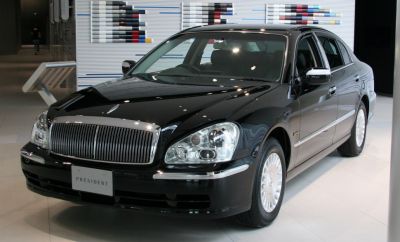
| Production: | 2003-2010 |
|---|---|
| Model Year: | 2003 |
| Length: | 5070 mm199.6 in |
| Width: | 1840 mm72.4 in |
| Height: | 1500 mm59.1 in |
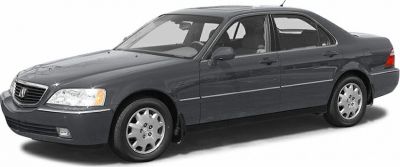
| Production: | 1995-2004 |
|---|---|
| Model Year: | 1996 |
| Length: | 4980-4995 mm196.1-196.7 in |
| Width: | 1810-1822 mm71.3-71.7 in |
| Height: | 1435 mm56.5 in |
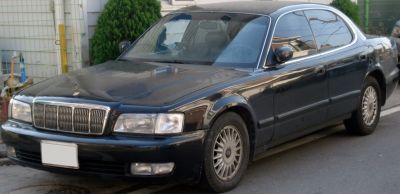
| Production: | 1997-2002 |
|---|---|
| Model Year: | 1997 |
| Length: | 5020 mm197.6 in |
| Width: | 1810 mm71.3 in |
| Height: | 1435 mm56.5 in |
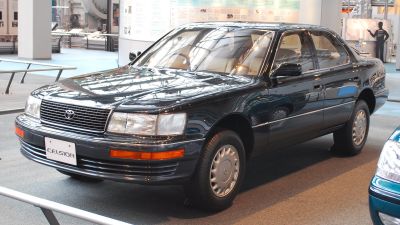
| Production: | 1989-1994 |
|---|---|
| Model Year: | 1990 |
| Length: | 4995 mm196.7 in |
| Width: | 1820 mm71.7 in |
| Height: | 1425 mm56.1 in |
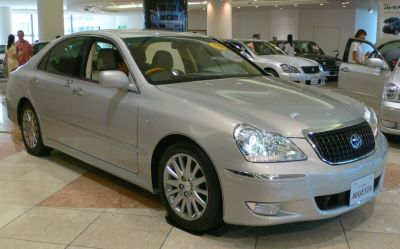
| Production: | 2006-2009 |
|---|---|
| Model Year: | 2006 |
| Length: | 4975 mm195.9 in |
| Width: | 1795 mm70.7 in |
| Height: | 1465 mm57.7 in |
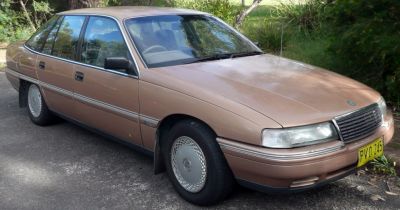
| Production: | 1990-1998 |
|---|---|
| Model Year: | 1990 |
| Length: | 4989 mm196.4 in |
| Width: | 1794 mm70.6 in |
| Height: | 1463 mm57.6 in |
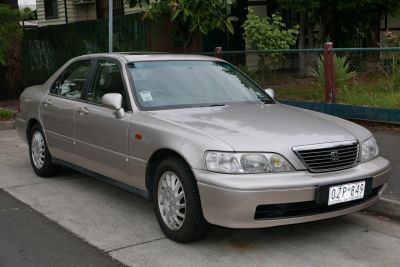
| Production: | 1996-2006 |
|---|---|
| Model Year: | 1996 |
| Length: | 4995 mm196.7 in |
| Width: | 1820 mm71.7 in |
| Height: | 1430 mm56.3 in |
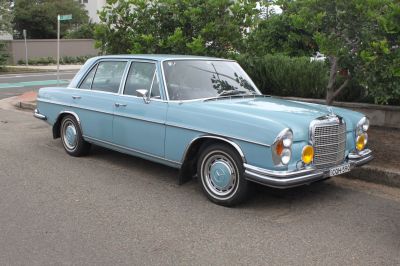
| Production: | 1970-1972 |
|---|---|
| Model Year: | 1971 |
| Length: | 5000 mm196.9 in |
| Width: | 1810 mm71.3 in |
| Height: | 1440 mm56.7 in |
